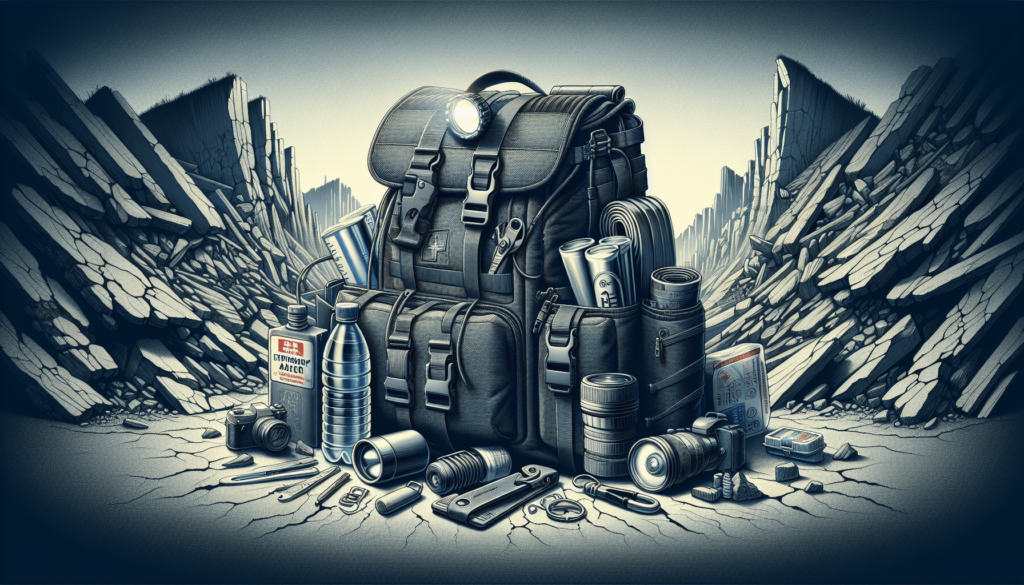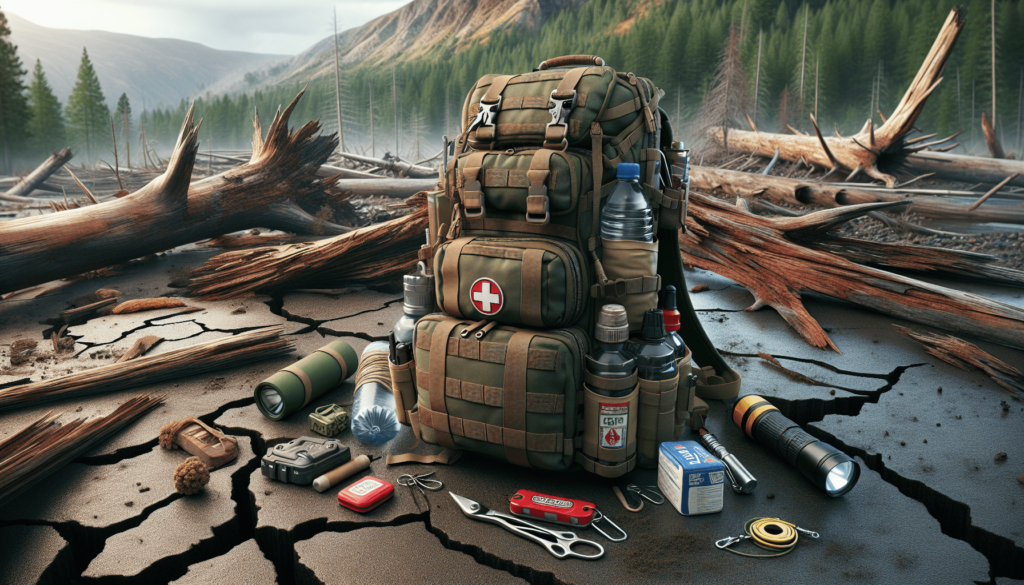
Have you ever wondered what we truly need after an earthquake shakes our world, both literally and metaphorically? The ground beneath our feet, something we often take for granted, suddenly turns into an unpredictable force of nature. One moment, everything seems intact, and the next, chaos unfolds. It’s as if the universe decided to give us a not-so-gentle reminder of its power. But in the aftermath, beyond the initial shock and confusion, what are the essentials we need to navigate this upheaval?
Understanding the Impact of Earthquakes
The Immediate Aftermath
After an earthquake, there’s a whirlwind of emotions and tasks. We might feel a mixture of relief at being unharmed and a sense of urgency to assess the situation. Is our home still standing? Are our loved ones safe? The initial moments are often about assessing physical and emotional damage.
Emotional Repercussions
It’s human to feel shaken after an earthquake. Our stability—both emotional and physical—is put to the test. We may experience fear, anxiety, or even disbelief. It’s essential to acknowledge these emotions as a natural response to the upheaval and begin the process of healing and rebuilding.
Essential Supplies for Post-Earthquake Survival
The concept of an “emergency kit” might seem a bit over the top until we find ourselves reaching for a flashlight in the pitch-black darkness, courtesy of a power outage. Here’s what such a kit—and a few other necessities—should contain to help us navigate the post-earthquake chaos:
Water and Food
Water and food are at the top of our list. It’s incredible how quickly we realize their importance when they’re not readily available. Experts recommend having at least one gallon of water per person per day for a minimum of three days. As for food, non-perishable items like canned goods, nuts, and dried fruits are efficient and essential.
Medical Supplies
A basic first aid kit can be a lifesaver. Literally. Bandages, antiseptic wipes, pain relievers, and any prescribed medications should be a part of this kit. During emergencies, the simplest medical supplies can address injuries that would otherwise become urgent complications.
Tools and Safety Gear
We also need some basic tools like a multi-tool, scissors, duct tape, and so forth. Don’t forget a sturdy pair of gloves and a mask to protect us from dust and possible debris. A whistle could also be incredibly useful for signaling for help if we find ourselves trapped.
Communication Essentials
Staying informed and being able to communicate can make a world of difference. A battery-powered or hand-crank radio and a fully charged power bank ensure that we stay connected. Keeping a list of important contacts written down, rather than digitally, is something we might not think about until our phone runs out of battery.
Shelter and Warmth
Tents, sleeping bags, or even a simple tarp can provide immediate shelter if needed. Emergency blankets are compact and can keep us warm when temperatures dip, which is often a concern when heating is unavailable.
Personal Documents
Important documents—think passports, insurance policies, and IDs—should be stored safely and made easily accessible. Digital copies on a secure cloud or USB drive are also a good backup plan, considering paper can be easily damaged.

Developing a Family Emergency Plan
Communication Strategy
Establishing a communication plan beforehand means we won’t waste precious time wondering who to call and where to meet. A designated out-of-area contact can facilitate communication if local networks are down.
Meeting Points
Decide on a couple of safe meeting spots in advance. One near the home and one outside the neighborhood if evacuation becomes necessary. Consistently discussing these plans during calm times makes us all less likely to panic during the chaos.
Practice Drills
It might sound a bit like organizing fire drills at school, but practicing our earthquake response plan ensures everyone knows what to do and where to go when the ground begins to shake.
Psychological First Aid
Understanding Stress Reactions
We might notice changes in behavior such as irritability or difficulty concentrating. These are normal, temporary responses to a traumatic experience. Recognizing them helps us approach our recovery with a clearer mind.
Building Resilience Together
We can’t overstate the power of community during recovery. Opening up conversations, expressing emotions, and listening to each other, are all integral parts of healing not just as individuals, but together as a group.

Reconnecting with Community
Checking on Neighbors
Let’s not underestimate the power of simply knocking on the neighbor’s door to check if they’re doing okay or if they need anything. It strengthens communal bonds and reassures everyone that they’re not in this alone.
Community Resources
Be it local support groups, shelters, or food banks, knowing what community resources are available can be incredibly comforting. Sometimes, it’s these communal efforts that get us through the toughest days.
Assessing and Repairing Damage
Structural Checks
Our homes often feel like safe havens. Post-earthquake, it’s vital to assess any structural damage thoroughly. Cracks, leaks, or any unusual changes could indicate underlying issues that need professional evaluation.
Utilities Inspection
Gas, water, and electricity lines can get severely disrupted. It’s critical for safety to inspect or have these checked, especially because they can lead to hazardous situations like leaks or electrical fires.
Safe Cleanup Practices
While we might be eager to clean up and restore normalcy quickly, safety is key. Wearing protective gear, turning off utilities when necessary, and being cautious of sharp debris or unstable structures prevent further injuries during cleanup.
Long-term Recovery and Preparedness
Learning from the Experience
Although the initial fear of an earthquake can be overwhelming, this experience can serve as a powerful lesson. It offers us a chance to evaluate and improve our preparedness rather than leaving us feeling powerless.
Preparing for Future Events
Reviewing what we did right and wrong after the fact helps us better prepare for the future. Earthquakes may remain unpredictable, but our response doesn’t have to be.
The Role of Technology in Earthquake Preparedness
Early Warning Systems
While we might not be able to predict earthquakes, technology has given us early warning systems that are becoming more sophisticated. Being familiar with how these systems work can give us precious extra seconds to react.
Apps and Online Resources
Numerous apps provide alerts, tips, and safety checklists. Making use of these resources can enhance our emergency preparedness strategy significantly more than any single piece of equipment.
Staying Informed with Reliable Sources
News and Updates
In the age of information, it’s crucial to stick to reliable sources during and after a crisis. Verified local news channels, government alerts, or sanctioned apps help us stay informed without the confusion of random speculation.
The Role of Social Media
While social media can be chaotic, it can also be incredibly powerful for real-time updates and communication. Knowing which hashtags or groups are relevant during an emergency can be beneficial.
Rebuilding and Moving Forward
Helping Each Other
As we pick up the pieces, the emphasis should be on mutual support. Aiding and receiving help have a dual impact—they both catalyze recovery.
Redefining Normalcy
Life after an earthquake may not snap back to what we once considered normal immediately. Patience and understanding are crucial as we redefine our lives and regain our sense of stability.
By considering these aspects, we’re better equipped to face the uncertainties that come with the territory of living in areas susceptible to earthquakes. Our shared experiences and collective wisdom will guide us toward resilience and recovery.
